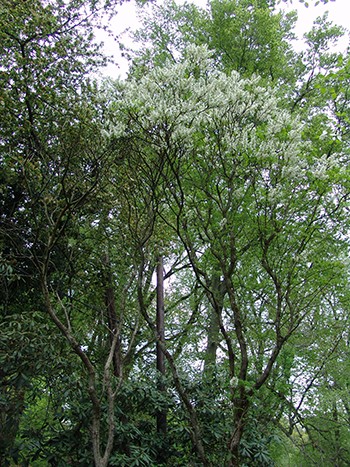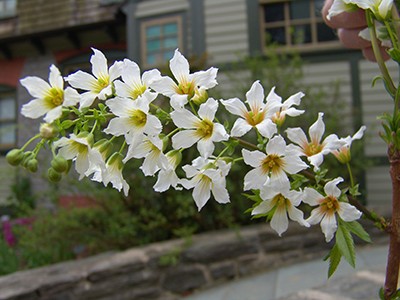Xanthoceras sorbifolium
The once-private garden of our first director, John Wister, has many rare horticulture gems. Upon his widow’s death, the garden was opened to the public along with all its horticultural delights. Known as a spring garden, visitors are so entranced by the daffodils and other unique spring bulbs on the floor of the garden they forget to look up.
In the canopy of the Wister garden, the virtually unknown Xanthoceras sorbifolium, yellowhorn, is blooming this month. Introduced in 1866 from northern China, its fragrant flowers bloom on long, 6- to 10-inch, racemes. The thin white petals of each flower have color blotches at the base which change from yellow to red. In full bloom, yellowhorn is quite striking.

Xanthoceras sorbifolium tends to be upright with a stiff, coarse branching habit. photo credit: D. Nemec
The plant tends to be upright with a stiff, coarse branching habit. Fruits mature into rounded capsules. Within each capsule, large pea-size seeds develop. Micheal Dir, author of Book Manual of Woody Landscape Plants, describes the roasted seeds as tasting like macadamia nuts.
When you visit the Scott Arboretum, don’t forget to visit the hidden gem of the Wister Garden. On your spring strolls always remember to look up at the trees in bloom.






No Comments